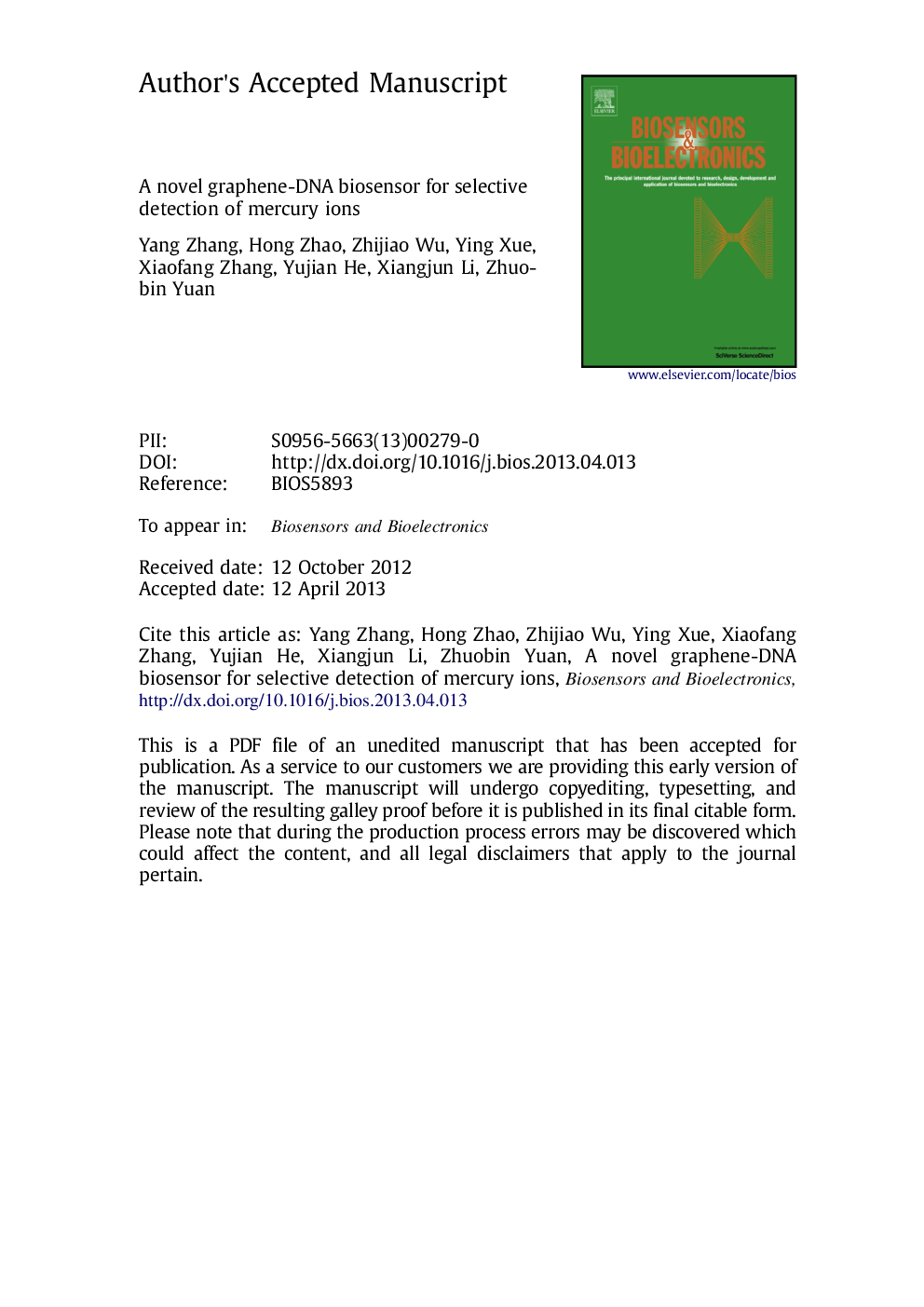| Article ID | Journal | Published Year | Pages | File Type |
|---|---|---|---|---|
| 7233989 | Biosensors and Bioelectronics | 2013 | 33 Pages |
Abstract
A novel electrochemical biosensor for sensitive and selective detection of mercury (II) ions (Hg2+) based on a DNA grafted graphene is proposed. Graphene oxide (GO) was reduced by dopamine, and then the single-strand probe DNA modified at the 5â²-end with an alkylamino modifier (NH2-ssDNA) was grafted on the reduced graphene oxide (RGO) surface via Michael addition reaction. In the presence of Hg2+, the target DNA with four thymine-thymine (T-T) mismatches would hybridize with the probe DNA on the glassy carbon electrode (GCE) through T-Hg2+-T coordination chemistry. The hybridization of the two oligonucleotides leads to the increase in the peak currents of [Ru(NH3)6]3+, which could be used for electrochemical sensing of Hg2+. The difference in the value of the peak currents of [Ru(NH3)6]3+ before and after DNA hybridization was linear with the concentration of Hg2+ in the range from 8.0Ã10â9 to 1.0Ã10â7Â M with a linear coefficiency of 0.996. The detection limit was 5.0Ã10â9Â M (S/N=3). The proposed electrochemical biosensor is rapid, convenient and low-cost for effective sensing of Hg2+. Particularly, the proposed method was applied successfully to the determination of Hg2+ in real environmental samples.
Related Topics
Physical Sciences and Engineering
Chemistry
Analytical Chemistry
Authors
Yang Zhang, Hong Zhao, Zhijiao Wu, Ying Xue, Xiaofang Zhang, Yujian He, Xiangjun Li, Zhuobin Yuan,
